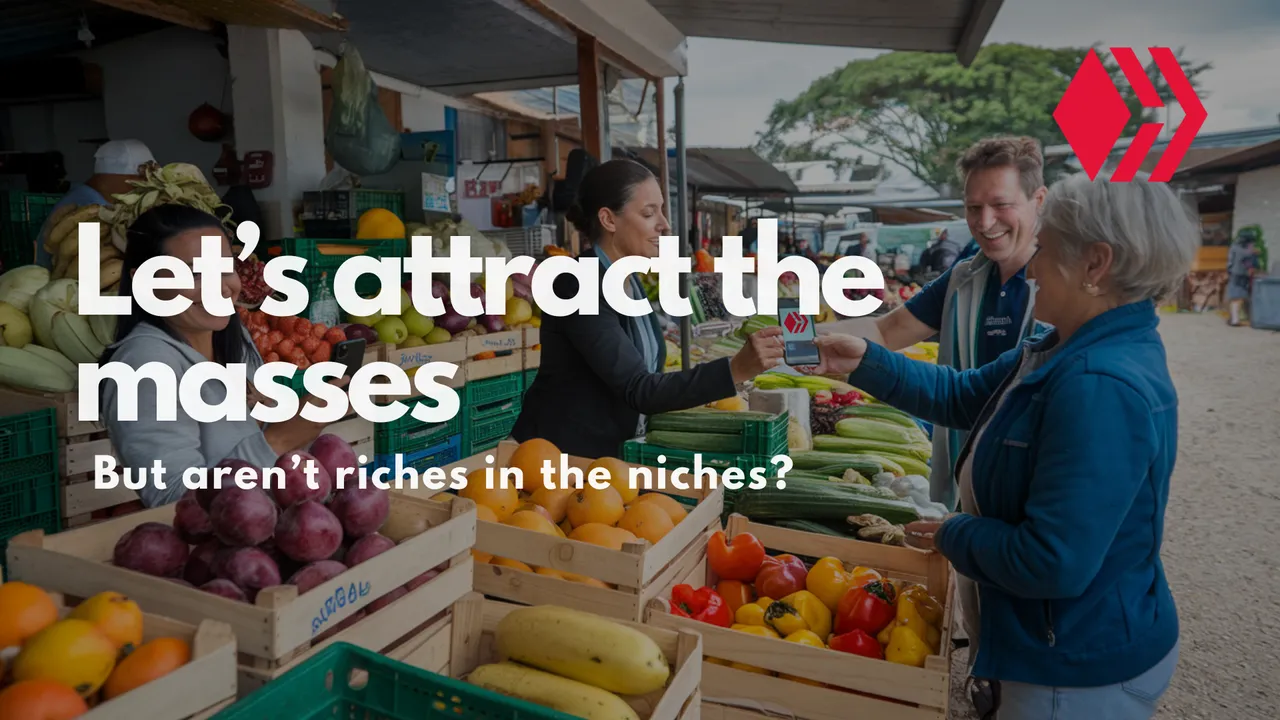
In what seems like the eve of an inevitable face-melting bull run, we hear (and read) about mass adoption of blockchain technology. Ah yes, that's hyper-bitcoinization for any bitcoin maximalists out there.
I often get asked if everybody's using bitcoin in El Salvador and Guatemala like you see on X...

source: ictworks.org
and the answer is a resounding...

The dream of mass adoption of blockchain and Web3 technology has long been a talking point among enthusiasts, with visions of every "average Joe" seamlessly transacting in cryptocurrencies to buy pupusas, coffee and pay the bills, owning tokenized assets, and actively participating in decentralized governance. But doesn't mass adoption mean that we would all have to accept the complexity and responsibility that come with decentralization and self-custody? Unlike gated solutions provided by the likes of Google, Meta and Coinbase that prioritize ease of use, blockchain tech often demands a little more knowledge, effort, PATIENCE and vigilance. As a result, I honestly ask myself whether the future of Web3 adoption is likely to be driven by the general public; you know... the masses.
The Challenge of Mass Adoption
Mass adoption requires a technology to be as intuitive and accessible as current mainstream solutions. Think about the simplicity of logging into a centralized platform like Instagram or making payments with a single tap on Venmo. These platforms succeed because they're stupid simple! They remove any complexity and take on the burden of security and custody for their users. Our beloved blockchain tech, on the other hand, operates on principles of decentralization, freedom and self-custody — empowering users with control over their assets and data but that comes with a cost: greater personal responsibility.
And most people don't want that responsibility.

source: Jimmy Song on X
Managing private keys, understanding wallet mechanics, and navigating decentralized platforms can be daunting for the average user. The fear of losing funds due to a misplaced private key or falling victim to phishing scams discourages casual users from engaging with blockchain-based solutions such as HIVE.
While user-friendly interfaces are improving, the reality is that Web3 demands a level of commitment and education that isn't appealing to everyone; But you know what? that's OK.
Niche Communities Matter
I say to bring more users to web3 and to HIVE, which is my favorite platform, maybe we should try focusing groups that are passionate and with specific needs that blockchain technology is uniquely suited to address.
For example:
Gamers: Play-to-earn models and in-game NFTs have already found traction among gaming enthusiasts. Gamers are more likely to embrace blockchain because they value asset ownership and interoperability, even if it means learning new systems.
Artists and Creatives: Musicians, visual artists, and filmmakers are exploring NFTs and blockchain as a means of reclaiming ownership, bypassing middlemen, and reaching global audiences. Communities of artists are motivated to overcome the learning curve because the rewards —direct control over royalties and intellectual property— are significant.
Developing Nations: In regions where financial systems are unstable or inaccessible, cryptocurrencies and DeFi offer an alternative that is not just desirable but necessary. Communities in these areas are willing to adopt blockchain despite its complexities because it solves urgent problems.
And my personal favorite...
Web3 Entrepreneurs and businesses: Builders and innovators experimenting with decentralized apps (dApps), DAOs, and tools to avoid paying taxes (not financial advice) are naturally more inclined to adopt the technology since it aligns with their professional goals.
On top of that, businesses can have a multiplier effect by giving users a reason to spend cryptocurrency as well as hiring talent in exchange for cryptocurrency.
(For more on this, please see my other article about more web3 businesses needed)
The Future Lies in Specialization
Yes, blockchain’s value lies in solving problems that centralized systems cannot. It doesn’t need to replace existing systems entirely to succeed though. It just needs to find its niches. I believe that over time, by focusing on these niches, we will create a network effect, gradually pulling in users as their specific needs intersect with blockchain’s capabilities.
Instead of waiting for mass adoption, we should focus on developing tailored solutions for passionate, motivated users and businesses . By addressing the pain points of niche markets and demonstrating real value, Web3 could grow organically and sustainably.
The future of blockchain isn’t about convincing everyone to adopt it frens; it’s about empowering those who already see its potential.
Recognize us crazy niche users and make solutions for us. We'll get the ball rolling.
By the way, the thumbnail for this post was generated with PeakD's brand new AI image generation option and only cost me $0.09 $HBD to create. It's an amazing tool that everybody should try. Case in point.
